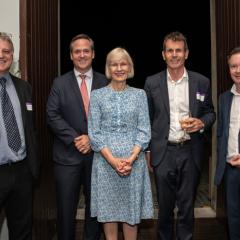Fertiliser prices in regional Queensland have been described as “ridiculous” but high rainfall and strong prices should still result in profitable crops for local growers, according to a University of Queensland study.
The findings were observed during research for the annual socioeconomic indicators report on gas-field towns, a study led by Dr Kathy Witt from UQ’s Centre for Natural Gas that measures the impact of the coal seam gas sector on local communities.
Dr Witt said this was the first year they had asked about the price of fertiliser, which is produced with nitrogen derived from natural gas.
“For people in the Surat and Bowen Basins, there are huge synergies between the production of natural gas which occurs in the region, and the use of fertiliser to grow crops and feed cattle,” Dr Witt said.
“Since the invasion of Ukraine the global demand for energy has increased and gas prices have skyrocketed, which has pushed up the price of fertiliser and, in turn, what we eat.”
The socioeconomic indicators reports have been produced by the Centre for Natural Gas for almost a decade and represent the longest running project of its type in the region.
This year, reports were prepared for 10 Queensland gasfields communities and, for the first time, data was collected for Narrabri in northern New South Wales.
“Importantly, the community has taken ownership of the reports and they see the value in determining, forensically, the changes that have occurred in association with the gas sector,” Dr Witt said.
The report indicates that the communities of Chinchilla and Moranbah are continuing to thrive with their district populations expected to reach 10,000 people by the end of the decade.
In Toowoomba, house prices in the east have surpassed the Brisbane average for the first time and house sales increased by 50% in 2021, which researchers attributed to more people working from home and commuting to the capital when required.
The number of businesses has continued to climb across gasfield communities, particularly in agriculture and construction sectors, with Tara and Wallumbilla (Roma region) recording their highest number of businesses ever in 2021. This was thought to be helped not only by the gas sector but also by high commodity prices and record rainfall in the region.
Despite a labour shortage in much of the country, unemployment rose sharply in Chinchilla and Dalby.
You can read the full Socio-economic Indicators Reports here.



